One of my all-time favorite coins comes without inscriptions. No names. No country. No mottos. No Chinese logograms or flowing Arabic text. Just a date, that’s all. Can you guess what it is?
Ok, so there is a denomination, 2 in this case, but who cares? I don’t see any “In God We Trust” or “Liberte Egalite Fraternite” or any similar motto. And there’s certainly no “United States of America” or “Republica Mexicana” or even “Helvetia.” In other words, there is no indication of the country of origin.
The double-headed eagle may help a little. That comes from the Byzantine Empire, which consisted primarily of the eastern part of the Roman Empire after the fall of Rome in 476 AD. But the map from Encyclopedia Britannica doesn’t narrow things down very much. The empire was extensive for a long time.
Since the date on our Mystery Coin is 1899, material from the eastern part of the Empire, Asia Minor, Syria, and Egypt, can be ruled out because, by that time, those would have Arabic dates. Can you find the Arabic dates on the gorgeous 500 kurush from Turkey, 1 pound from Syria, and 1/40 qirsh from Egypt shown below? To do so, you need to be familiar with Eastern Arabic Numerals and the Hijri Calendar.
By the way, there is a good overview of beautiful coins like those above in our article on substack: Introduction to Islamic Coins.
Pressing on, you might know that coins with double headed eagles come from four modern countries: Russia, Germany, Austria, and Hungary. Here’s a 5 rouble, a 1 thaler, a 100 corona, and a 4 kreuzer, respectively, all with double headed eagles:
Now we can match the details of the eagle design. Which is it? Can you figure it out?
The ribbons above the two heads point to Austria and, sure enough, our Mystery Coin is a 2 heller from Austria. There’s a 1 heller which looks the same but is a little smaller.
Most all of these coins carry low value: a dollar or two for circulated coins, five dollars for unc. The 1892 date is super-good, with the selling price of the circulated 2 heller shown above at $316 US dollars during a 2024 auction.
As a final note, some coins dated 1916 have a changed coat of arms on the eagle side. Those with the changed arms bring about twice normal price.

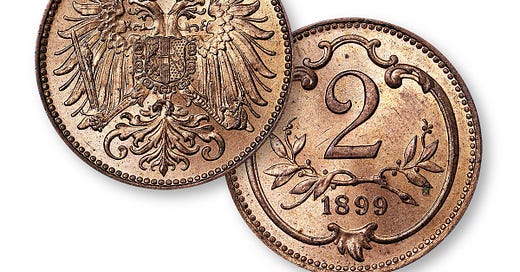


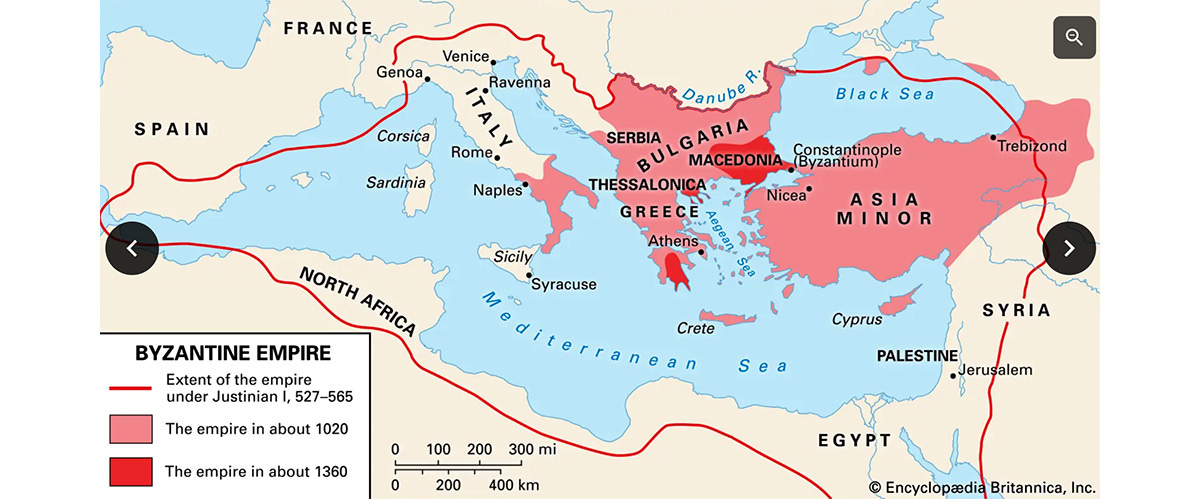
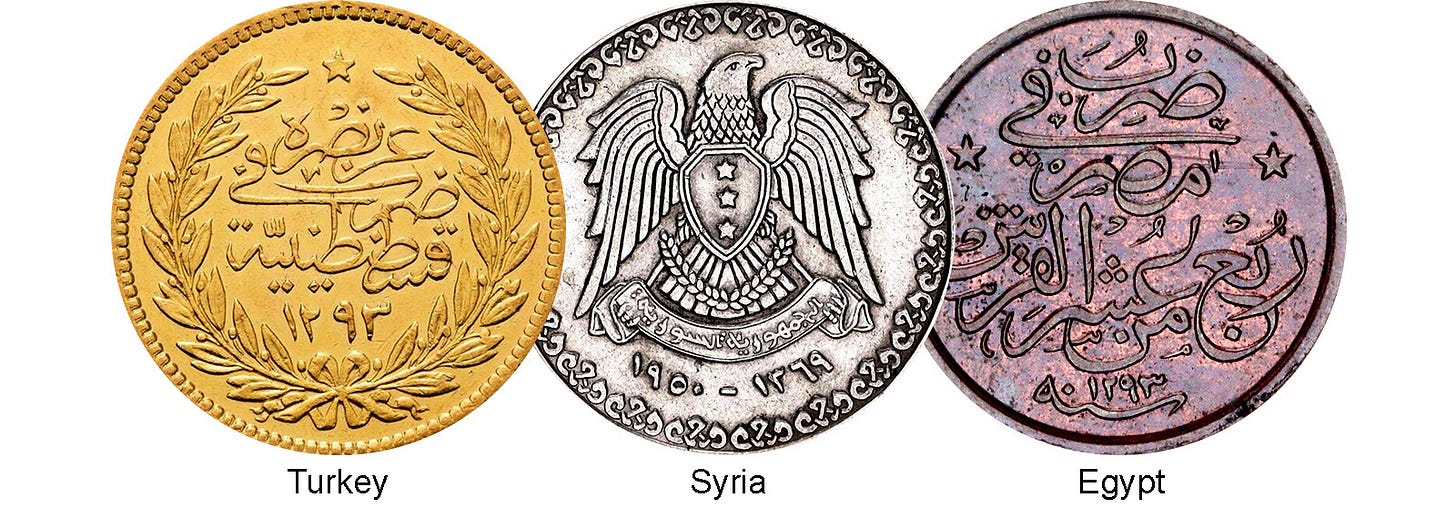
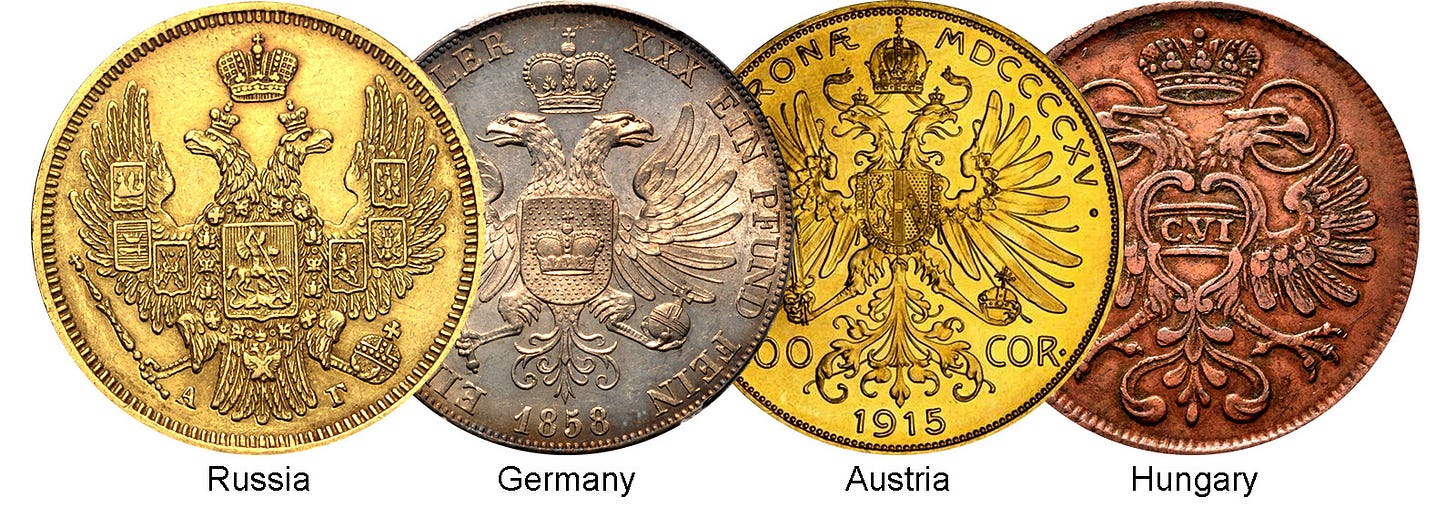

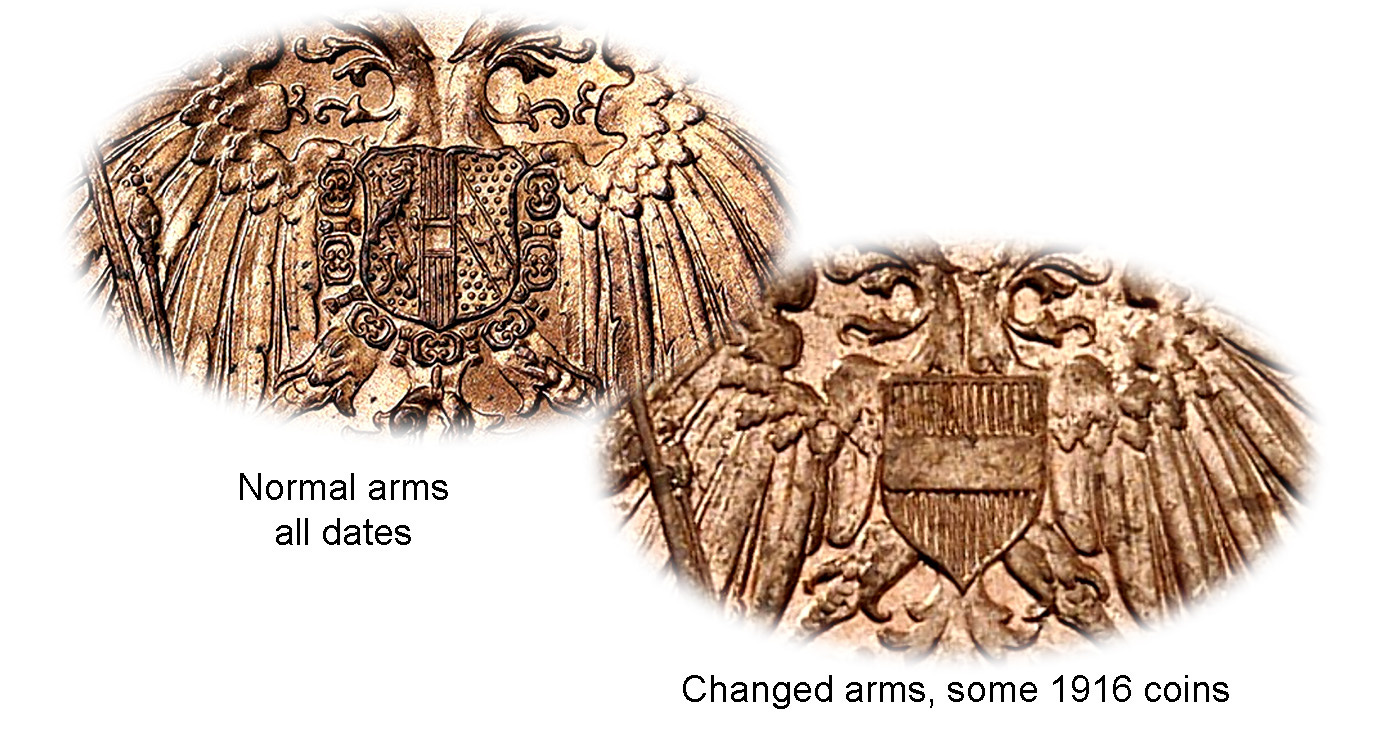
Wow Paul, that is an absolutely gorgeous specimen!